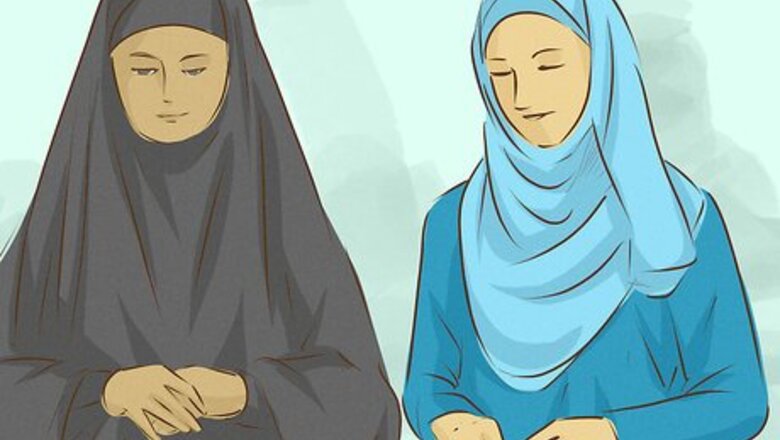
views
Understanding Islamic Modesty
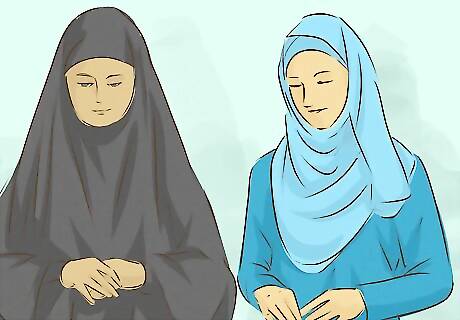
Recognize what the hijab is. The term hijab is actually the Arabic term for creating a partition or barrier, and doesn't specifically mean a type of head covering. In Islam, hijab consists of the fundamental behaviors for modesty, as well as how Muslims should dress. These rules apply to both men and women, and vary depending on how close the person is to reaching puberty. Many people frequently refer to a headscarf of any sort as a hijab, so the meaning is often context-dependent. One of the most important purposes of hijab is to identify the wearer as an adherent of Islam.
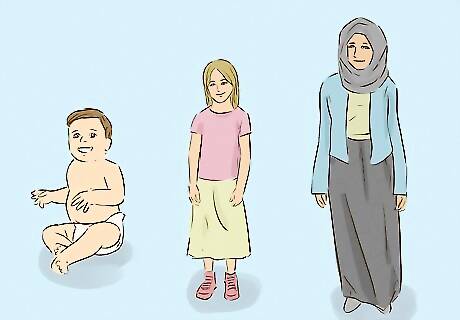
Understand basic modesty in Islamic culture. Muslims are required by the Quran to be modest, especially around those of another gender, and must cover their awrah (what is deemed a private area in Islam). What counts as the awrah is largely dependent on the age and sex of the person in question - for example, babies do not have an awrah, and young children only need to cover their private parts. The awrah for a woman shortly before and after she reaches puberty is from her head to her ankles. Most scholars agree that it's acceptable to leave your face and hands uncovered, though not everyone agrees on whether you should cover your feet.
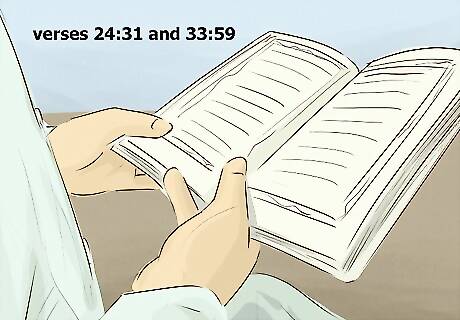
Read the Quran verses about veiling. To gain a better understanding of the rules of veiling, it's important to read the Quran verses that address it, with the most frequently cited verses being 24:31 and 33:59. "And tell the believing women to reduce [some] of their vision and guard their private parts and not expose their adornment except that which [necessarily] appears thereof and to wrap [a portion of] their headcovers over their chests and not expose their adornment except to their husbands, their fathers, their husbands' fathers, their sons, their husbands' sons, their brothers, their brothers' sons, their sisters' sons, their women, that which their right hands possess, or those male attendants having no physical desire, or children who are not yet aware of the private aspects of women. And let them not stamp their feet to make known what they conceal of their adornment. And turn to Allah in repentance, all of you, O believers, that you might succeed." [Quran 24:31] This verse is interpreted as the rules for both modesty and for veiling, and is the reason why most Muslims consider it a requirement to veil. "O Prophet, tell your wives and your daughters and all the women of the believers to bring down over themselves [part] of their outer garments. That is more suitable that they will be known and not abused." [Quran 33:59] This verse, prior to translation, uses the Arabic word jalabib (the plural of jilbab), which translates as "loose outer garments". This is frequently interpreted to mean that Muslim women should wear loose clothing, rather than anything tight or form-fitting.

Look into ahadith (plural of hadith) about veiling. Hadith, the sayings of the Prophet Muhammed and other religious figures of his time, often give further insight to parts of Islam that aren't elaborated on by the Quran. While not many ahadith refer to veiling specifically, there are some out there, including the following: It was narrated that Aisha said that the Prophet said, "Allah does not accept the prayer of a woman who has reached puberty unless she wears a veil." [Sunan Abi Dawud 641; classed as Sahih by Al-Albani] It was recorded that Safiya bint Shaiba said that Aisha said, "When [the Verse], "They should draw their veils over their necks and bosoms" was revealed, the women cut their waist sheets at the edges and covered their heads and faces with those torn pieces of cloth." [Sahih al-Bukhari, Vol. 6, Book 60, Hadith 282] Narrated Aisha, "The believing women covered with their veiling sheets used to attend the Fajr prayer [the dawn prayer] with Allah's Apostle, and after finishing the prayer they would return to their home and nobody could recognize them because of darkness." [Sahih al-Bukhari 578]
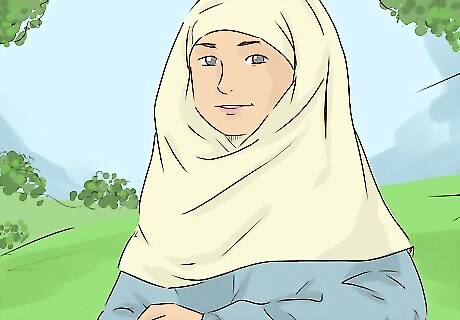
Know when most people begin veiling. Most Muslim girls are accustomed to wearing the hijab by the time they've reached puberty, though there are many views on when is the best time to start. New converts are encouraged to begin veiling as soon as possible, though it's acceptable to gradually transition into covering instead of all at once. Some people believe that all girls should begin veiling by age nine, even if she hasn't started puberty yet; others think it's best to wait until signs of puberty appear (such as the developing of underarm or pubic hair, or the onset of periods). If no signs appear, then the girl will be considered an adult by age 15 in lunar years. Other people introduce their daughters to wearing the hijab when they start learning their prayers at age seven, or by age 10 when the five-times daily prayer habit may be established. Most madrassas have rules requiring girls to wear the hijab when attending Qur'an classes, which could be as young as age five, as it helps them to develop their Muslim identity and to feel part of the global body of Muslims.
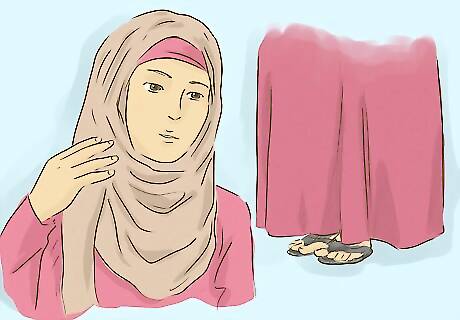
Be aware of the full religious significance of veiling. The hijab isn't just your headscarf - it's how you cover yourself in general. The requirements of hijab mean that the awrah must be covered. Simply put, the "rules" of wearing the hijab are: To not display your appearance (beauty) except what is already apparent (i.e., your face and hands, and possibly your feet). To avoid showing hair on your head. To refrain from wearing tight clothing, so your figure isn't exposed. To wear your hijab so that it covers your head, neck, and chest (though not all Muslims wear their hijab in this way). To avoid unveiling around those who are non-mahram. The use of makeup while wearing hijab is debated, since the use of makeup can draw attention to your features. Most people agree that light application of makeup is acceptable, though, as long as it wasn't meant to draw the attention of others.Did You Know? Some Muslims believe that hijab must be truly modest, and that you should avoid flashy colors or designs. Others believe that it's okay to dress nicely or wear more colorful or patterned clothing, as long as it's not with the intent of drawing attention to yourself.
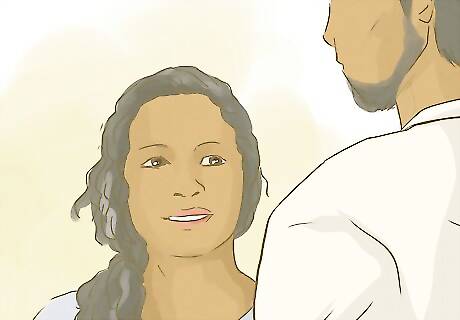
Know when veiling is not considered a requirement. There are some people that you are not required to wear the hijab around, who are referred to as mahram. While you are still required to dress modestly around these people, it's fine to reveal your hair, arms, shins, and feet around them. You are considered to be in the presence of mahram when around: Men who are considered family, such as your grandfathers, father, uncles, and nephews (however, this does not extend to cousins) Your spouse, in-laws, and children (including stepsons and grandchildren) Other Muslim women Children who are not close to reaching puberty Many Muslims have varying viewpoints on whether it's okay to unveil around a non-Muslim woman; some believe it's fine because you're around a woman, but others believe that a non-Muslim woman could describe your appearance to others.
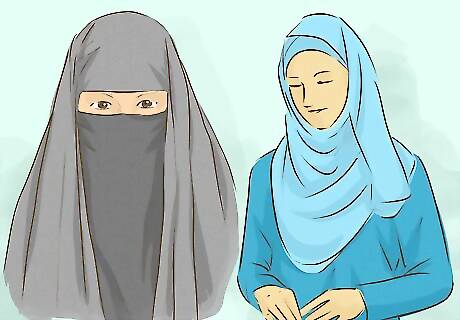
Recognize the difference between the hijab and the niqab. For new Muslims, it can be difficult to tell all the various types of head coverings apart; however, the hijab and niqab are not the same thing. The hijab is frequently a catch-all term for head coverings which always leave the face exposed; the niqab covers the wearer's face as well, with only the eyes left uncovered. Wearing the niqab is the norm in many Muslim countries, especially in the Gulf region, and is becoming increasingly commonplace in some Western countries, though most Islamic scholars agree that covering the face is not a requirement under the Quran. Some women choose to wear the niqab to feel closer to Allah or to follow the example of the Prophet's wives, who wore niqab. Don't mistake the niqab for the burqa, which also fully covers the wearer, but has a small mesh paneling over the eyes. It has a negative reputation, as it's closely associated with the Taliban (as they forced women to wear burqas). Other types of head coverings include the al-amira, a two-piece tube-like scarf; the shayla, a long scarf that covers the head and is pinned at the shoulders; the khimar, a head covering that extends down to the waist; and the chador, a cloak that covers the head and is held closed by the hands.
Considering Your Factors

Understand how you feel about the hijab. You shouldn't feel obligated to wear the hijab just because your friends are wearing it or your parents are encouraging you to wear it. Veiling must be your decision, based on your understanding of and belief in religious rulings, and you should only wear it when you feel ready and comfortable with it. The hijab is not the end-all-be-all of Islam. There are many aspects of Islam, as well as many reasons why someone would or wouldn't wear it.

Look at the laws in your country. While many countries don't have laws about the hijab in and of itself, some countries require that certain veils not be worn, restrict where they can be worn, or require that they are worn. To avoid legal trouble in your area, look up the laws regarding hijab where you live. Most bans on head coverings tend to apply to facial veils, like the niqab and the burqa. Bans on all types of headscarves are uncommon, but not unheard of. Conversely, some Muslim countries, such as Saudi Arabia and Iran, require that women wear a veil. The consensus amongst Muslim scholars is that wearing the hijab after puberty is mandatory under Islamic law (Shariah). However, most non-Muslim countries do not legally mandate the hijab.
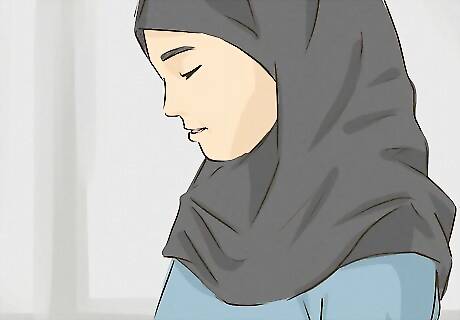
Think about your devotion to Islam. Wearing a hijab will immediately identify you as a Muslim, which can be both positive and negative depending on your location. If you're not certain how close you feel to your religion, or don't want to identify yourself as a Muslim, you may want to hold off on veiling; if you definitely want people to know you're Muslim and feel very close to Islam, wearing the hijab or even niqab may seem like a natural step to take. If you are not Muslim and want to wear the hijab anyway, it's recommended not to do so, as the hijab is an act of worship. It may upset or annoy other Muslims if you wear it casually or like a fashion accessory.

Analyze how frequently you could wear the hijab or niqab. There are many reasons someone may not be able to wear it all the time - whether due to needing to get used to it, not living in a safe or supportive environment, or working a job where covering your head would be unsafe or cause you to lose your job. Consider your circumstances - can you and do you want to start veiling all at once, or would you need to make the shift gradually? Frequently switching between wearing and not wearing the hijab is discouraged, so if you can't wear the hijab every day, you may want to wait until you can wear it regularly. Try not to find reasons for not wearing hijab, but embrace it as a gift from Allah.

Consider your safety at home. Not all Muslims live in a home where their religion is accepted by the people around them (be it family or roommates). If you live in a household where Islam isn't accepted, it may be in your better interest to wait until you live on your own or with more accepting people, especially if you fear you may be disowned, kicked out, or abused for your religious beliefs. While it is possible to wear the hijab when not with your housemates or family members, there's potential for someone to see and mention it to your living partners (such as a teacher commenting about your hijab to your parents), so tread carefully. Alternatively, if you live in a Muslim family but don't feel very connected to Islam, you may have to veil until you move out if you know your family would cause you physical or mental harm for not doing so.

Make sure you would be safe in your community. Social norms vary from place to place, and even if wearing or not wearing a hijab isn't technically illegal in your area, you may be harshly judged by those around you or even be physically harmed. While you may stand out in some areas depending on whether or not you veil, consider your actual safety, not just whether you'd be drawing attention to yourself. Do you live in a safe area and have friends and family that accept the right for you to choose whether to veil, or would there be serious risk of you being threatened or attacked for not conforming? The residents of some Muslim-majority areas may treat a lack of hijab as socially unacceptable, and those who have chosen not to veil in Islamic countries (e.g. Saudi Arabia or Iran) have received death threats and even been arrested. In non-Muslim countries or neighbourhoods, it's common to get odd looks or questions from those who aren't familiar with Islam and might not be sure as to what you're wearing. While they may be rude at times, that alone shouldn't discourage you if you'd like to wear the hijab.

Recall how much you are willing to cover. While some women cover themselves in some non-traditional ways (for example, exposing their wrists or ankles), it's extremely uncommon to wear shorts and short-sleeved shirts with a hijab and is disliked by other Muslims. Generally, if you want to wear the hijab, you should be willing to cover up to your elbows or wrists and ankles daily at the least, even when it's hot outside. Wearing hijab doesn't mean you have to wear thick clothes during the summer. Those who wear hijab often wear thin and loose (but not see-through) clothing, such as the abaya, to avoid overheating.
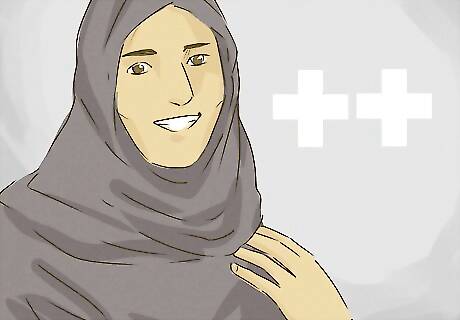
Consider positives regarding the hijab. It may be tricky to see what could be positive about wearing the hijab, especially if you live in a desert climate or aren't used to covering up. However, there are some hidden benefits of veiling. Some of the positives of the hijab that Muslim women cite include: Being judged by your skills and intelligence rather than your appearance Not having to focus on your appearance as much Feeling closer to Islam and to Allah, as well as your Muslim friends and/or family Being easily identifiable as a Muslim, providing an opportunity to speak with others about Islam Being protected from unwanted stares Earning rewards from Allah that may help you to enter Jannah (Heaven)
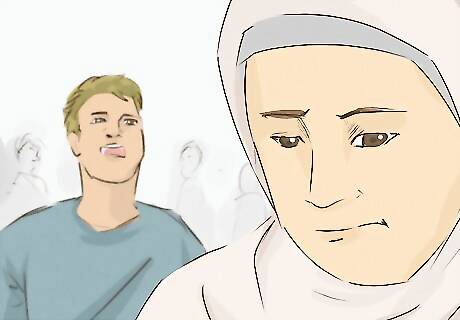
Think about how the hijab could make your life harder. Even if you want to wear the hijab, it's also very important to consider how the hijab could impact what seem to be normal everyday life tasks. Especially in countries like the US and parts of Europe, Islam is not always viewed kindly and you may encounter closed-minded people. Some of the most common difficulties associated with wearing the hijab are: Bullying, discrimination, or harassment Difficulty in building relationships with non-Muslims Drawing attention to yourself rather than diverting it Being a "spokesperson" for Muslims or receiving many questions about Islam It's also important to note that the hijab will not protect you from sexual assault.
Making Your Decision
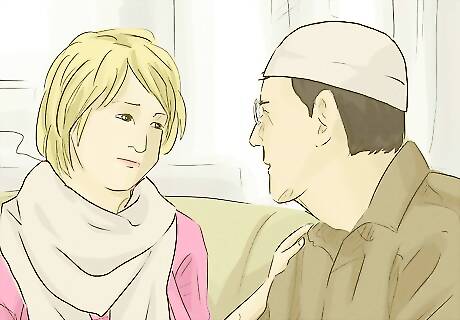
Don't succumb to pressure from others. Once you've made your decision about whether or not to wear the hijab, others may encourage you to change your mind, and put forward some compelling arguments. However, you should only change your mind if you have a different point of view; pressure from peers or family can be difficult to overcome, but remember, they aren't you and can't make your decision. Try saying something like, "I respect your views and understand that you want me to do what you feel is best for me, but whether or not I wear the hijab is a decision between Allah and I. Please don't tell me whether I should or shouldn't wear it." Remember that you can always choose whether to veil or unveil later on, remembering that Allah likes consistency in acts of worship.

Find other ways to express your faith without covering. If you choose not to veil, whatever the reason, there are ways of living up to your faith without wearing the hijab. (After all, being a Muslim isn't dependent on whether or not you veil.) Try to participate in activities that bring you closer to Allah and help make the world a better place. Join Muslim groups, such as youth groups, events, clubs, study circles or mosques, where wearing the hijab is a choice. Perform religious duties such as praying, bodily cleansing, or fasting. Give money to charity (or, if you receive earnings, zakat), donate things such as food, clothes, or furniture, or volunteer. Celebrate Islamic holidays, such as the month of Ramadan, Eid al-Fitr, and Eid al-Adha.
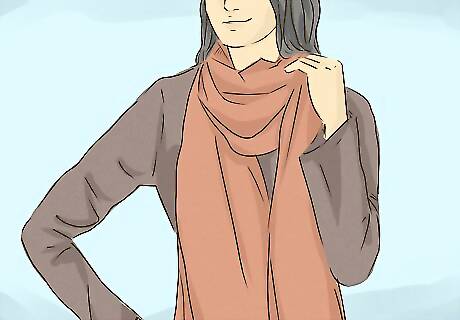
Consider dressing modestly if you choose not to veil. Some women who are close to their faith don't veil for a variety of reasons, but that doesn't mean that dressing in accordance with your faith is out of the question. If you want to cover up, try wearing loose clothing, long-sleeved shirts, long pants or skirts, or other clothes that cover most of your body. While it's not a necessity, it is encouraged. If you want to veil but wouldn't be safe wearing a hijab, consider other ways of covering your head, such as hats, or covering your neck using a scarf.

Follow the rules of a mosque. If you attend services at a mosque, it's frequently a requirement for women to cover their heads, out of respect for Allah and the other worshippers at the mosque. While the rules vary per mosque, it's more likely that the mosque will require women to veil before they enter, especially in highly religious communities. To avoid potential conflict, wear a hijab if the mosque requires you to.
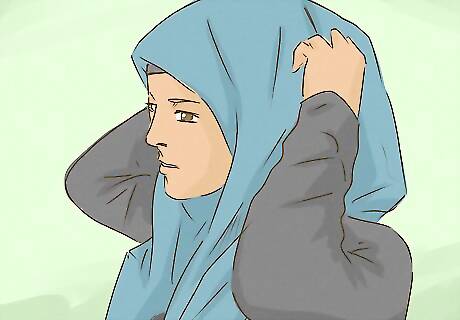
Begin wearing the hijab if that's what you decide to do. If or when you begin wearing the hijab, choose a style of hijab that you feel suits you best and that you like, and if fashion is important to you, pick out clothing styles that complement it. Remember when you should be veiling - during religious activities and around non-mahram people - and do your best to wear the veil during those times. Remember that your hijab is an expression of your faith, and that you should be proud of it. It can be tricky to put on a hijab if you haven't put one on yourself before. Try practicing a few times at home before going out and looking up tutorials online, and asking friends or family for help.
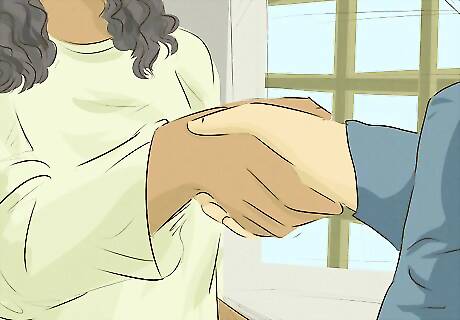
Connect with others who share your choice. There are many different views on the hijab, and if you feel alone in your decision, remember, you definitely aren't. Try looking for social groups of people who share your decision on veiling - whether it's at a mosque, school, work, clubs, or even online. If you're uncertain about your decision or are struggling with it, having others around you who support your decision can be a major factor in feeling secure in your choice.
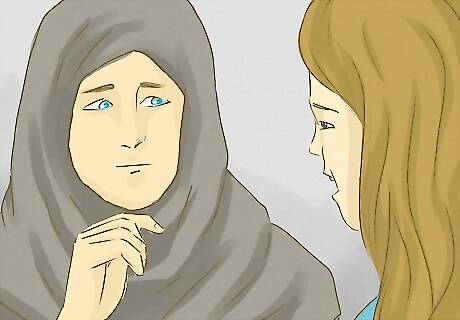
Be prepared to explain your decision. Regardless of whether you wear the hijab, you may encounter people who don't understand your choice - be it other Muslims who think you should cover, or non-Muslims who don't understand Islam. Remain calm when explaining your view, and be prepared to explain it multiple times if your decision isn't the most common one. If you wear hijab and are asked why you wear it, try something like, "This is a hijab. I wear it because I'm Muslim and it brings me closer to God." In contrast, if you don't wear it and are asked about it, consider a response such as, "I don't wear the hijab because I can't wear it at my workplace due to safety issues. I don't feel comfortable wearing it sometimes, but not other times."
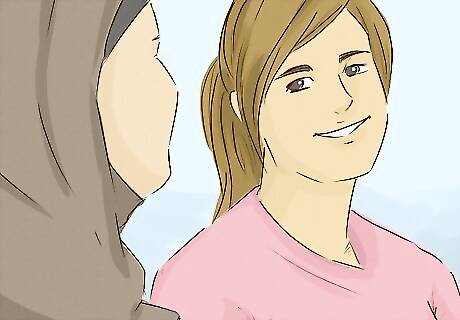
Stay confident! It can be tough to stick with your decision about veiling, especially if others around you don't do the same or aren't supportive. Making a drastic shift in your appearance can also be jarring and you may feel exposed or like you're sticking out in a crowd. Don't let this sway your choice. Always strive to be the best person you can be, whether or not you veil.



















Comments
0 comment